
Emphasizing the “Control” in Controlled Burn at Pringle Nature Center.
April 5, 2023 | Topics: Spotlight, Stories
Prescribed burns can educate the public while they help improve prairie habitats.
By Eddee Daniel and Liz Alvey
I learned about the upcoming prescribed burn at Pringle Nature Center in an unprecedented way: It was announced on Instagram. Usually, I see social media posts of these events after the fact and think to myself, “darn, I wish I’d known about that one!” In addition to announcing the date of the planned burn, the Pringle post prudently warned potential visitors, “Please do not be alarmed if you see smoke or fire….”
As for me, the post might as well have said, “please come and enjoy the fire!” I immediately contacted the Center and asked permission to photograph the event, which was granted.

As it turned out, I was not the only person present that day who was not only not alarmed but excited to be able to witness the event. Liz Alvey, the naturalist at Pringle Nature Center, says this: “I think the burns are really cool events to experience. When visitors see a burn happening in the park, they’ll usually stick around to watch, and we’ll get a lot of questions, like whether the fires are safe and what happens to animals during the fire.”

If you too have ever wondered about the question of wildlife, Alvey goes on to explain: “With a small, slow burn like this one, most animals actually sense it in time to escape to another area or burrow under the ground and wait it out.” One of the team of experts who conducted this controlled burn told me that he usually sees voles and other small animals scurrying out of the way as the fire progresses.
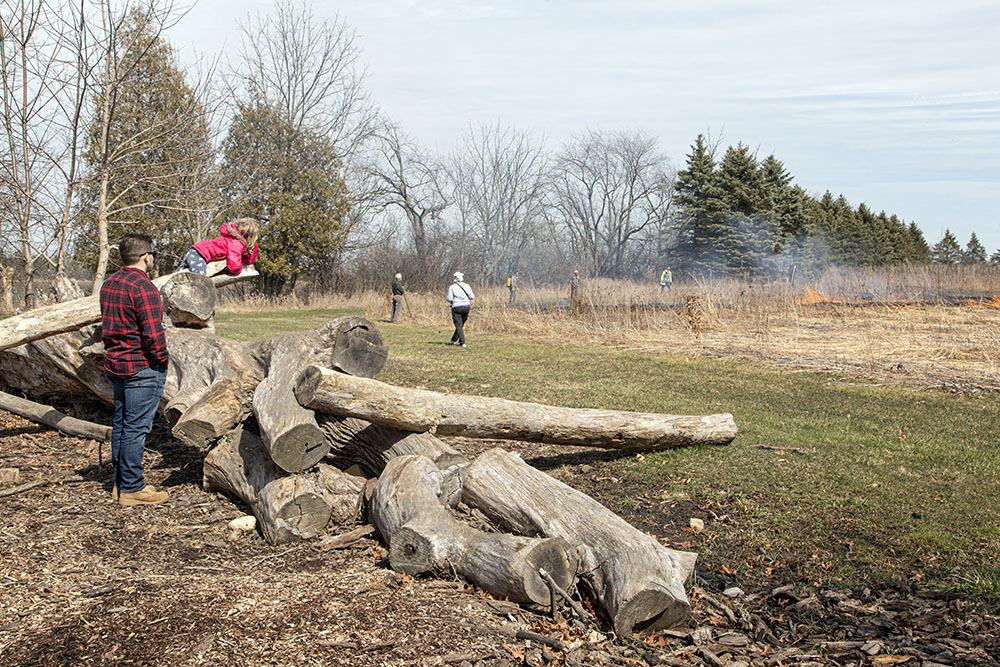
I love Alvey’s perspective on spectators and was thrilled to see a group of people watching, including a number of children playing on the natural playground adjacent to the field being burned. Most of the burns I’ve had the privilege of witnessing previously were conducted out of sight of visitors. In this case, the safety of the process was apparent not only because of the obvious skill and diligence of the burn team (common to all the prescribed burns I’ve seen), but also the wide trails that acted as fire lanes—and which were in fact quite soggy that day from recent rains.
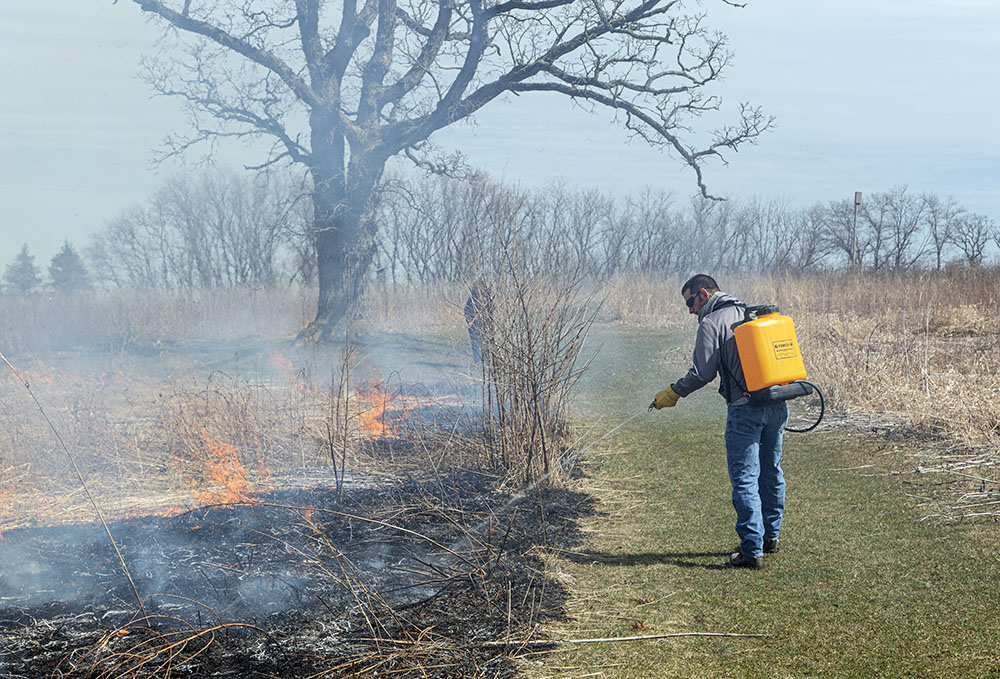
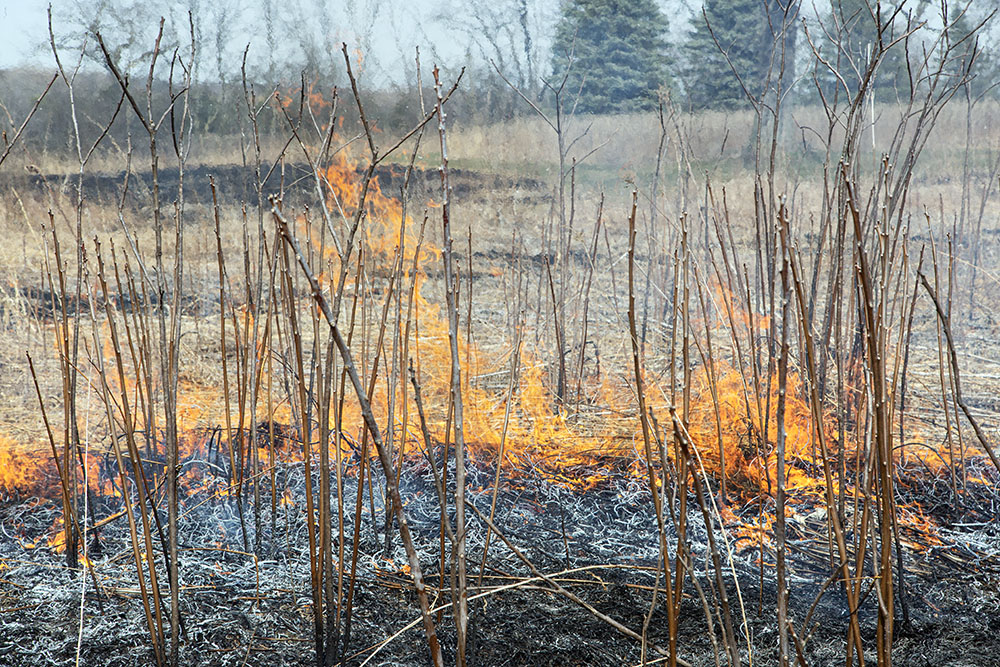
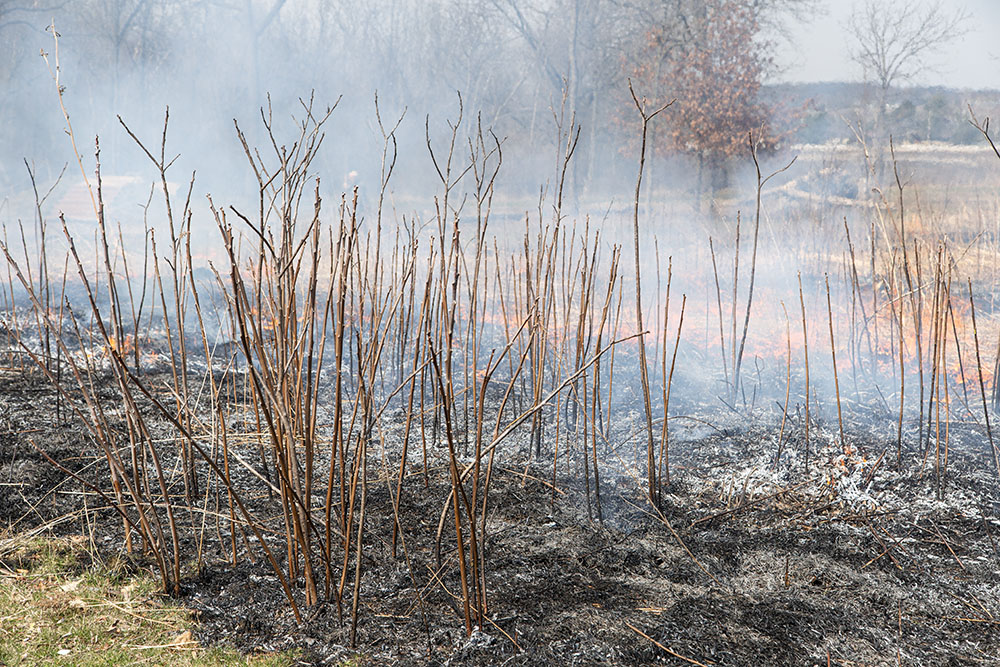
When, in an email, I asked Alvey about burns at Pringle Nature Center, which is located in Bristol Woods County Park, she sent me this reply:
“We burn the prairie in Bristol Woods every one to three years, depending on the state of the prairie and weather conditions. Tallgrass prairies are fire-dependent ecosystems, so frequent burns are important for maintaining the balance of species and nutrients in the system. Since the areas in Bristol Woods are restored prairie (they were planted to replace original prairie that might have once existed in the area), it is important that they are burned periodically to simulate spontaneous burns that would happen in these ecosystems.

“Burning serves a number of purposes, including returning nutrients to the soil, clearing dead plant matter that might shade out growing plants, and cutting out non-native plants that compete with the fire-adapted native species. Fire also prevents trees from dominating the habitat and is actually necessary for some prairie plant species to spread or germinate their seeds; native prairie plants have become so fire-adapted that the burns are part of their life cycles.
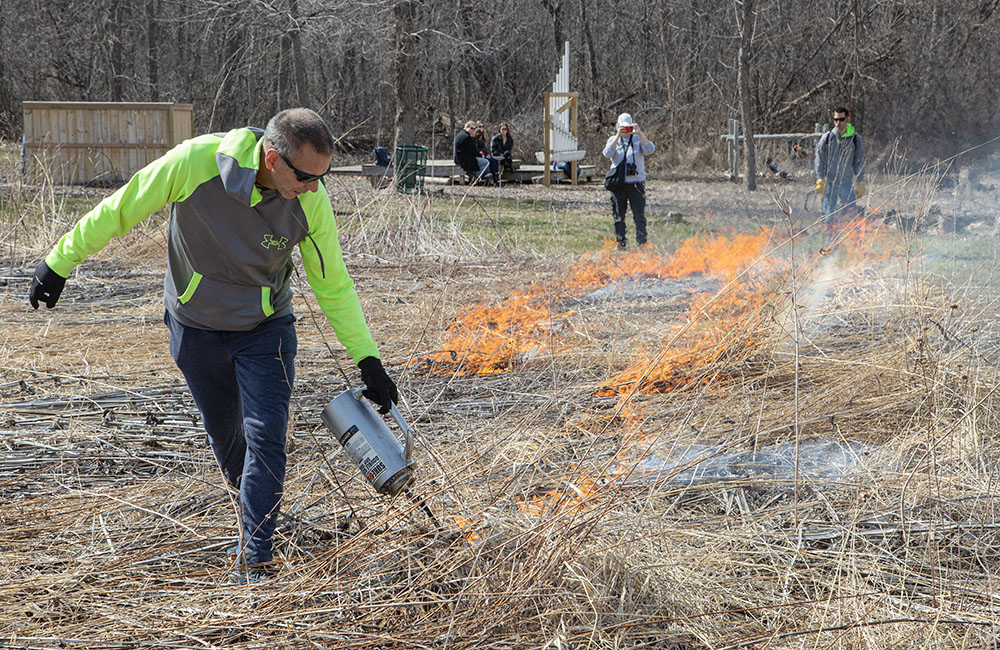
“The burns are done in a planned, controlled way so that they also don’t get out of hand and endanger homes or other habitats. Two of our board members, Nick Spittlemeister and Al Sommer, have prescribed burn certifications. They plan and carry out the burns with help from volunteers. They choose a day with weather conditions that will not encourage a rapid burn, and set and stamp out fires in small sections at a time with specialized tools.”
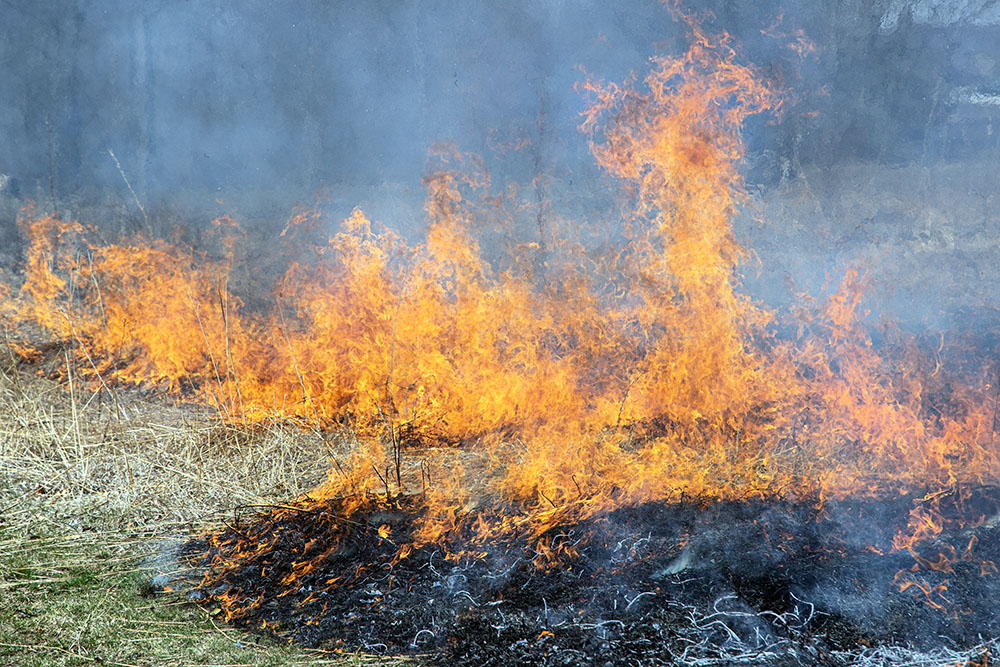
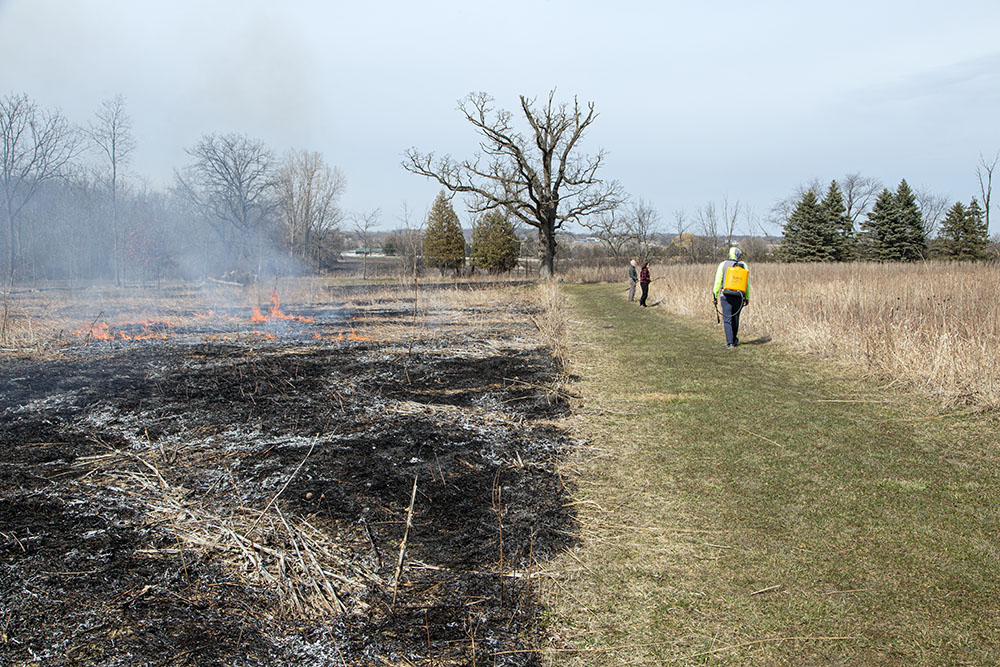
If, when you think about fire in a natural area, what comes to mind are the massive, uncontrolled wildfires that make national headlines when they burn hundreds of thousands of acres and threaten whole communities…, well these prescribed and controlled burns are quite the opposite. In fact, small controlled burns like these can help prevent massive wildfires, which generally happen when there’s been an excess build up over many years of dead, dried vegetation. Tragically, our nation’s long efforts to “prevent forest fires” have been too successful, often suppressing natural fire that is needed to avoid the conditions that lead to huge wildfires.


Back at the Pringle Nature Center prescribed burn, the problem that the team encountered wasn’t too much dead vegetation, but too little. In large sections of the prairie, the fire, after being ignited by the team, simply sputtered out. Even some sections that, in these photos, appear to be tinderboxes ripe for burning, didn’t sustain the fire. I overheard one of the crew, as he was preparing to pack up, say, “we’ll just have to wait two or three more years!”
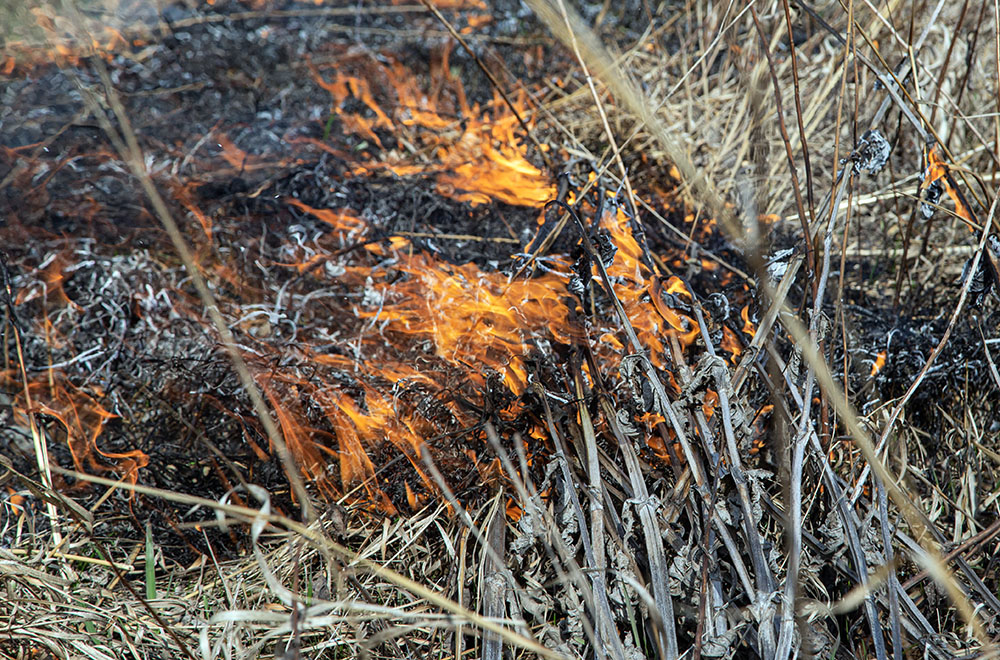
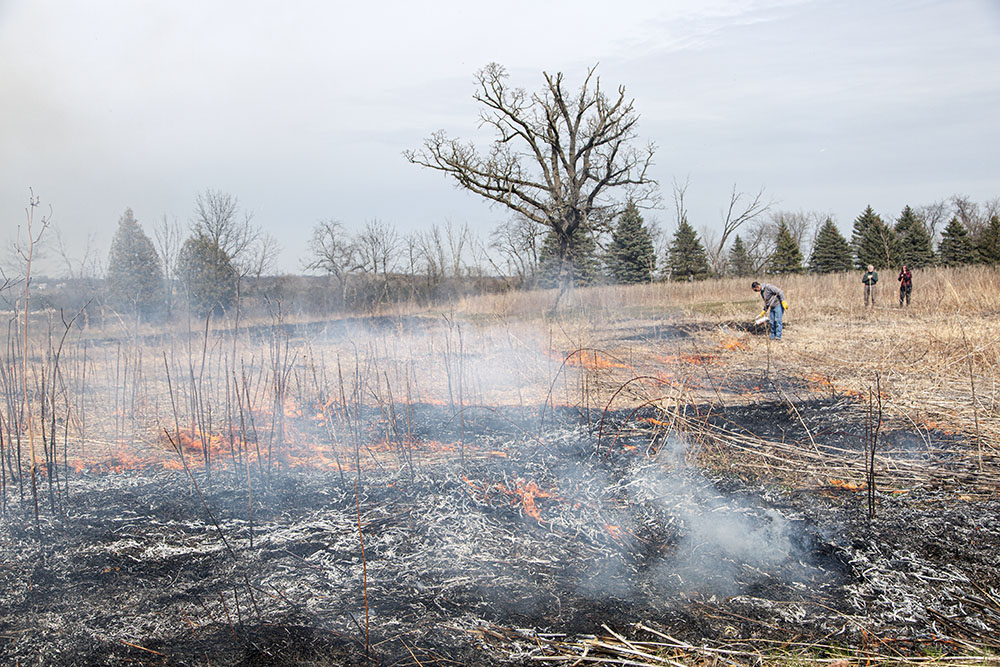
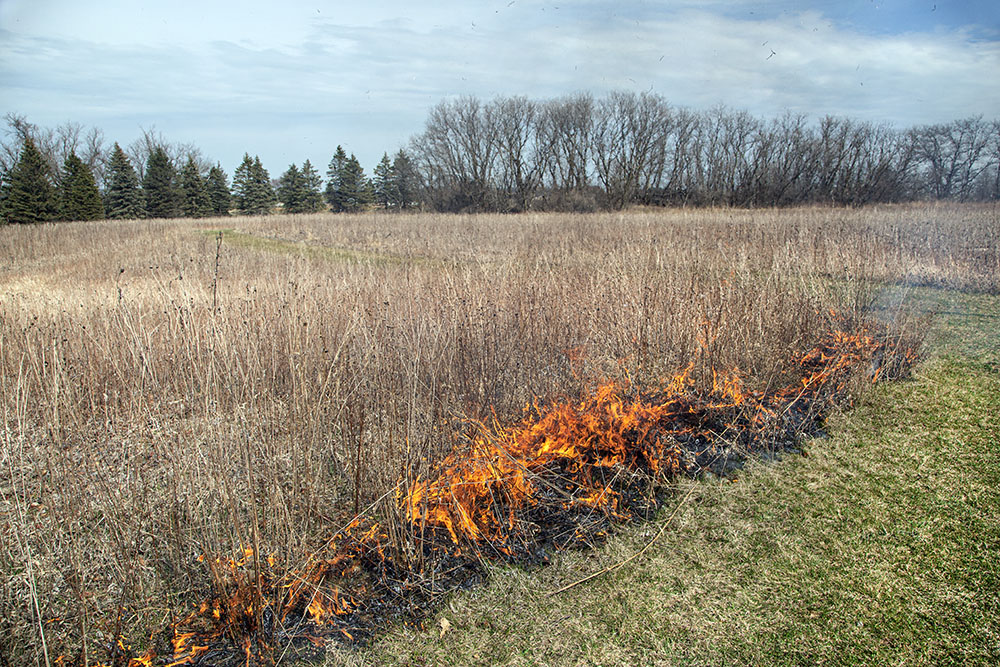
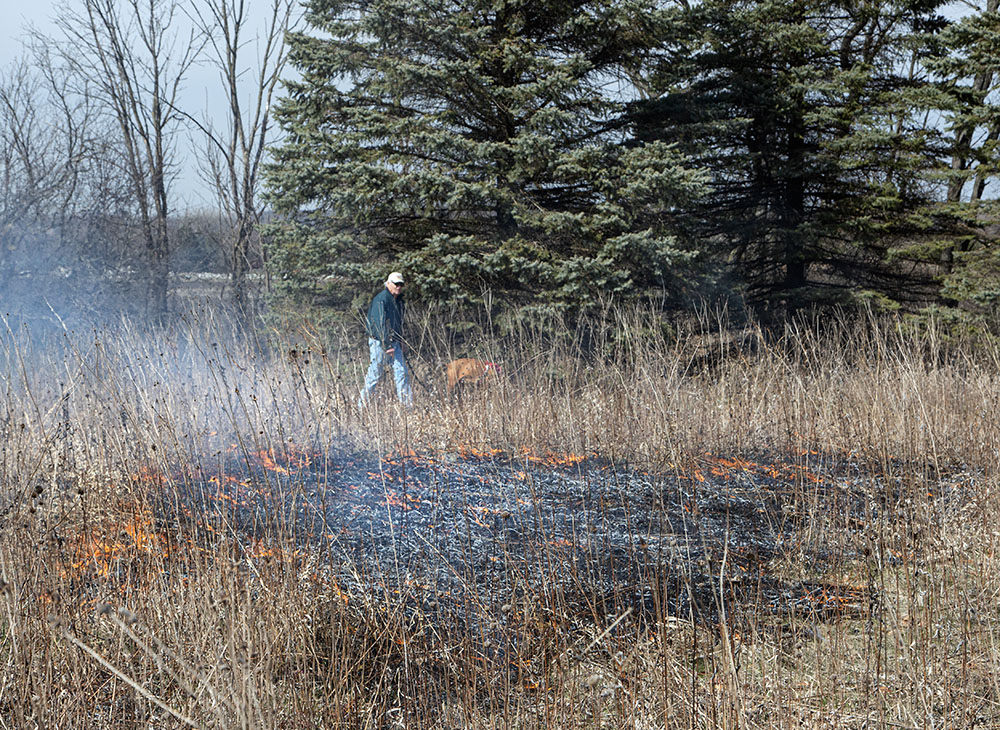
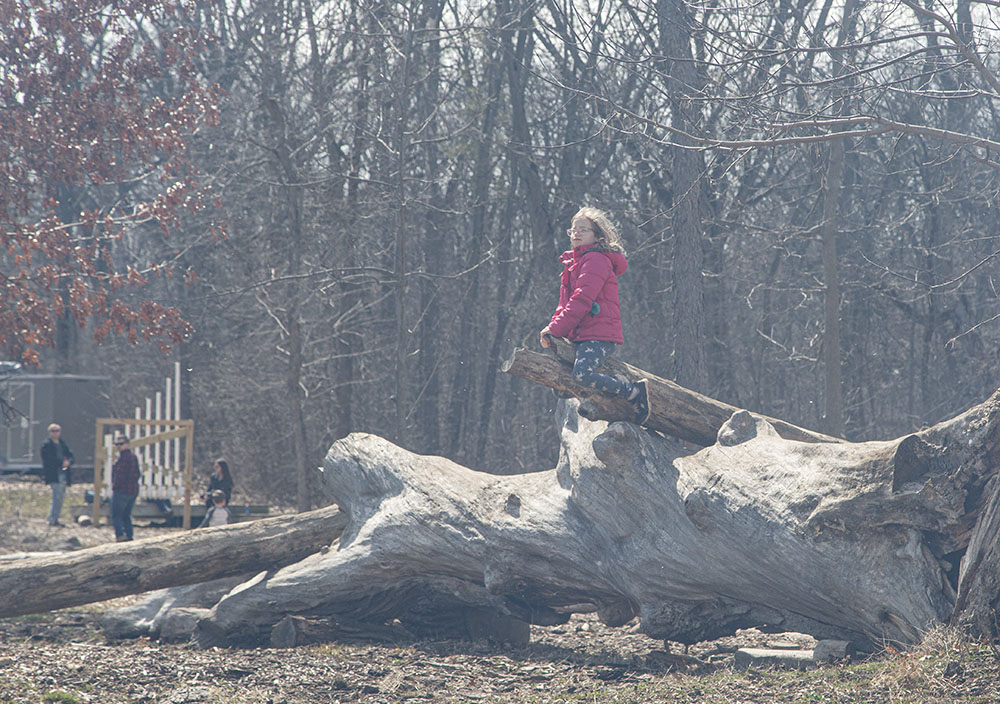

Related stories (The Natural Realm) and photo albums (Flickr):
Story:Fellenz Woods Preserve: A controlled burn
Album: Burning Three Bridges Park
Story: Burning Washington Park
Album: Burning Bong
Story: An Earth Day Success Story: MMSD’s Greenseams® Program Rejuvenates a Restored Prairie
Eddee Daniel is a board member of Preserve Our Parks. Liz Alvey is a staff naturalist at Pringle Nature Center. Pringle Nature Center is a project partner of A Wealth of Nature.

